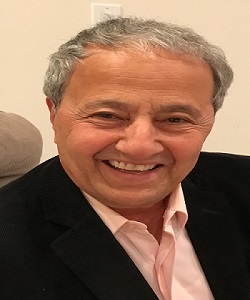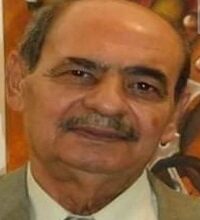
وا شنطن– ما لن تفقده ذاكرتي ، ويفوق بكثير ما شاهدته من روائع الفن الذي احتواه متحف غوغنهايم للفن المعاصر بلباو باسبانيا،خلال زيارتنا له هذا الصيف، هي تلك المجموعة من العميان .
كل يتمسك بعصاه. يتوسطون مرافقتهم المبصرة . يتوقفون، إذ تتوقف ،أمام كل عمل فني، لوحة أو مجسمات هندسية.يستمعون إليها مرهفي السمع، يدنون منها بآذانهم كي لا تفوتهم كلمة. تتغير تقاسيم وجوههم وتعابيرها إنسجاماً مع ما تشرحه وتنقله إليهم. تتفاعل تلك الوجوه المبتسمة استحساناً، إعجاباً ، و في بعض الأحيان استفساراً حول ما يسمعون. لوحة إنسانية آسرة.
ماذا يفعل كفيف البصر في متحف صامت يسوده هدوء وقور.لا يُسمع فيه إلاّ همسات الزوار و وقع أقدامهم ! ماذا يفعل كفيف البصر في مكان الناطق الوحيد الذي يستلم فيه قيادة نقل المرئي إلى الذهن والإحساس هو البصر!
التقطت لهم صورة. لم ألتقط لباقي محتويات المتحف، إنها من مقتنياته ،لكنهم، أولئك العميان ” أصحاب البصيرة”، من مقتنيات الفكر، مقتنيات اللحظات الفارقة في محطات العمر.
نعم إنها البصيرة. هي ذاتها التي جعلت من هيلين كيلر، التي فقدت حاستي السمع و البصر في شهرها التاسع عشر ، ولم يبق لها سوى إسمها ” هيلين”، الذي يعني النور، لتتمسك بمعناه ، و تثبت جدارة التسمية .
هل خطر ببال أحدنا ، كيف يمكن مجرد التعامل مع الحياة، وليس الإبداع و التفوق والنجاح، في صمت مطبق و ظلام حالك!
هي البصيرة التي جعلتها من رائدات صناع المعجزات في حياة البشر.و جعلت من غيرها من مكفوفي البصر روّاداً وعمالقة في الإبداع والعطاء أيضاً.
و الحديث عن البصر والبصيرة يعيدني إلى سؤال طرحه علي أحد طلابي حول المرادفات الكثيرة في اللغة العربية، وفروق المعاني بفروق الحركات. كان منها أفعال : رأى، شاهد، نظر، تطلع، شاف ، وأجملها، مادة مقالتي هذه، أبصر.شرحت له الفروق بين كل منها، وعلاقتها بالحدث وظروف استخدامها. أتذكر أنني توقفت حينها عند كلمتي : أبصر و البصيرة. و أسهبت في شرح فوارقهما، مستأنساً ،طبعاً ،بما قيل عنهما على لسان علماء اللغة و أساتذتها المختصين.
قيل :” البصر هو حالة مستقبلية للوجود، والبصيرة هي إدراك الطبيعة الداخلية للأشياء.” وقيل : ” البصر هو شيء تراه ، أما البصيرة فتأخذ كلاً من الإبداع و التفكير،و الحدس و المنطق.” و قيل أيضاً: ” البصر هو واحد من الحواس، يعني الرؤية، يريك ظاهر الأشياء ،أما البصيرة فتريك حقائق الاشياء.”
أولئك العميان بصورهم المحفوظة عندي، سيبقون شاهداً على أنّ هناك الكثيرين، ممن كان في المتحف إياه، أو في الحياة بأوسع متاحفها، قد يكون لديهم البصر ولكنهم عاجزون عن امتلاك البصيرة.
بوابة الشرق الأوسط الجديدة
Sight and Insight
Reda Asaad
Washington- What is etched permanently in my memory that by far surpasses the wonders of the art I witnessed at the Guggenheim Museum of Contemporary Art in Bilbao, Spain, during our visit this summer, is that group of blind people touring the museum.
Each held tightly to their cane standing around their seeing guide. They stopped whenever she stopped, in front of every piece of art—whether a painting, geometric formation, or sculpture. They listened to her attentively, leaning in closer so they wouldn’t miss a word. The expressions on their faces changed in harmony with what she explained and conveyed to them. Their smiling faces reacted with approval, admiration, and sometimes even inquiries about what they were hearing. It was a captivating human scene.
What is a blind person doing in a silent museum, filled with dignified calm, where only the whispers of visitors and the sound of footsteps can be heard? What is a blind person doing in a place where sight—the sole guide that transmits the visual to the mind and emotions—takes the lead?
I took a picture of them. I didn’t photograph the rest of the museum’s contents; they are its possessions. But those blind people, the “insightful ones,” are the possessions of thought, the treasures of significant moments in the journey of life.
Yes, it is insight. It is the same insight that made Helen Keller, who lost both her hearing and sight at nineteen months old, clinging only to her name “Helen,” which means light, to hold on to its meaning and prove the worthiness of the name.
Has anyone ever considered how one could merely manage life, let alone excel, create, and succeed, in utter silence and complete darkness?
It is this insight that made her one of the pioneers of miracle-making in the life of human beings and also made others among the blind pioneers and giants in creativity and giving.
Talking about sight and insight brings me back to a question posed by one of my students about the many synonyms in the Arabic language and the differences in meaning with subtle changes in vowels. Among them were the verbs: “رأى” (saw), “شاهد” (watched), “نظر” (looked), “تطلع” (gazed), “شاف” (saw), and the most beautiful of all, the subject of this article, “أبصر” (perceived). I explained the differences between each of them and their relationship to the event and the context of their use. I remember that I then focused on the words “أبصر” (perceived) and “بصيرة” (insight), elaborating on their distinctions, drawing, of course, on what has been said about them by linguists and specialized professors.
It has been said: “Sight is a future state of existence, and insight is the perception of the inner nature of things.” And it has been said: “Sight is something you see, while insight encompasses both creativity and thought, intuition, and logic.” It has also been said: “Sight is one of the senses; it means seeing and shows you the appearance of things, while insight reveals to you the truth of things.”
Those blind people, whose images are preserved with me, will remain a testament to the fact that there are many, whether in that museum or in life’s broadest museums, who may have sight but are incapable of possessing insight.
Great Middle East New Gate




